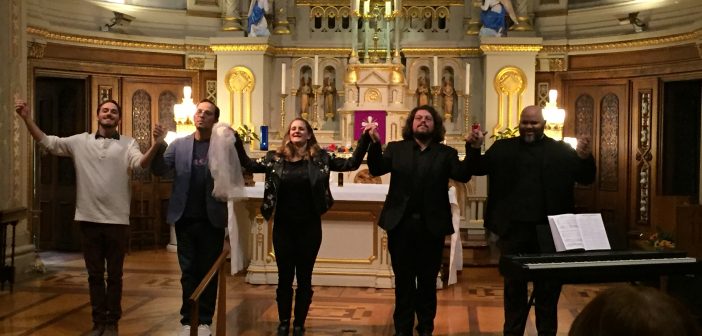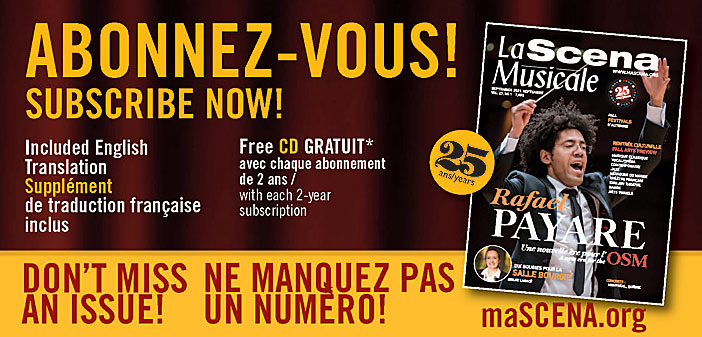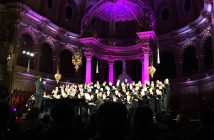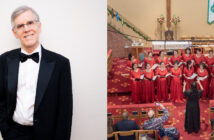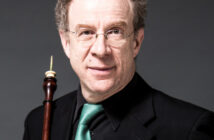-
3.5
Gaetano Donizetti’s 1843 opera buffa Don Pasquale was recently staged by Opéra immédiat, in collaboration with the Istituto Italiano di Cultura. This review covers the last of just two performances, held on April 6th at the Notre-Dame-de-Lourdes Chapel.
The part of Don Pasquale was sung by bass Steeve Vérayie. His acting was more physical than vocal, as he amusingly broke the fourth wall on several occasions. The aria, Un foco insolito, as well as other comedic lines, felt rushed. Fortunately though, his patter was impressive in the Son tradito, beffeggiato outburst.
Singing the role of Norina/Sofronia was luminous soprano Sophie De Cruz, who started off with an impressive cavatina, Quel guardo il cavaliere. She had great stage presence, was very committed to the role, and every syllable of her Italian was intelligible in the cavernous chapel.
As Dr. Malatesta, baritone Ariel Lefebvre had a very nimble presence on stage. He projected well, in a role that suits him well. In his aria, Bella siccome un’angelo, he even interpolated a few high notes, which was a pleasant treat for the audience. The difficult patter in the duet between Pasquale and Malatesta, arguably the opera’s most famous excerpt, Cheti, cheti, immantinente, was executed skilfully and very comically by both singers.
The lovelorn Ernesto was sung by Jaime Sandoval, whose mellifluous tenor voice filled the chapel in perfect Italian. Some high notes in his two arias were thrillingly interpolated. Toward the end of the opera, Sandoval showed signs of struggle, but he kept it together perfectly.
On stage with his back to the audience, talented accompanist Giancarlo Scalia played superbly on a full-size electronic keyboard connected to an amplifier. Although it was likely impossible given the chapel’s size limitations, hearing Donizetti being played on even the smallest acoustic piano would have enhanced this musical experience. Scalia kept the action moving breezily, and the singers were comfortable with the chosen tempi. In particular, the energetic overture and the beautiful opening to Act Two (written for solo trumpet in the orchestral version) were Scalia’s musical highlights.
The Notre-Dame-de-Lourdes Chapel is one of the oldest and most beautiful places of worship on the island of Montreal. The singers were unamplified – as they should be – however, the overall experience was compromised by the chapel’s unsuitable acoustics. Though the voices of Sandoval and De Cruz resonated best, the reverberation of some louder passages were still uncomfortable to my ears. During the various ensembles, the four soloists were heard distinctly only when they were standing far apart from each other. Otherwise, the voices of Lefebvre and (especially) Vérayie would unfortunately be drowned out by the other singers.
The excellent acting was comical, while always appropriate. The scene introducing Norina (as Sofronia) to a gaping Pasquale, and the duet, Signorina, in tanta fretta, were of note. Costumes were regular street clothes but were not distracting. Of the four characters, only De Cruz had important costume changes, which fit the story perfectly. Props were appropriately few. The most awkward was a hockey stick, retrieved by Pasquale from behind the altar during the patter duet – he probably meant to use it as a weapon. In the rousing finale, the characters used their cellphones to take wedding selfies – including a few with the audience! The absence of a chorus was not a major loss, since it would have had three brief appearances – all in Act Three. It must be noted that Lefebvre (acting as Malatesta) sang the brief role of the notary, which is written for comprimario bass.
Overall, the singing, acting, and musical accompaniment were excellent. Scalia and his cast did their best with the chapel’s acoustics and Vittorio Valerio Garaffa’s staging, both of which were disappointing. Ultimately, this production would have worked much better as a concert performance.

